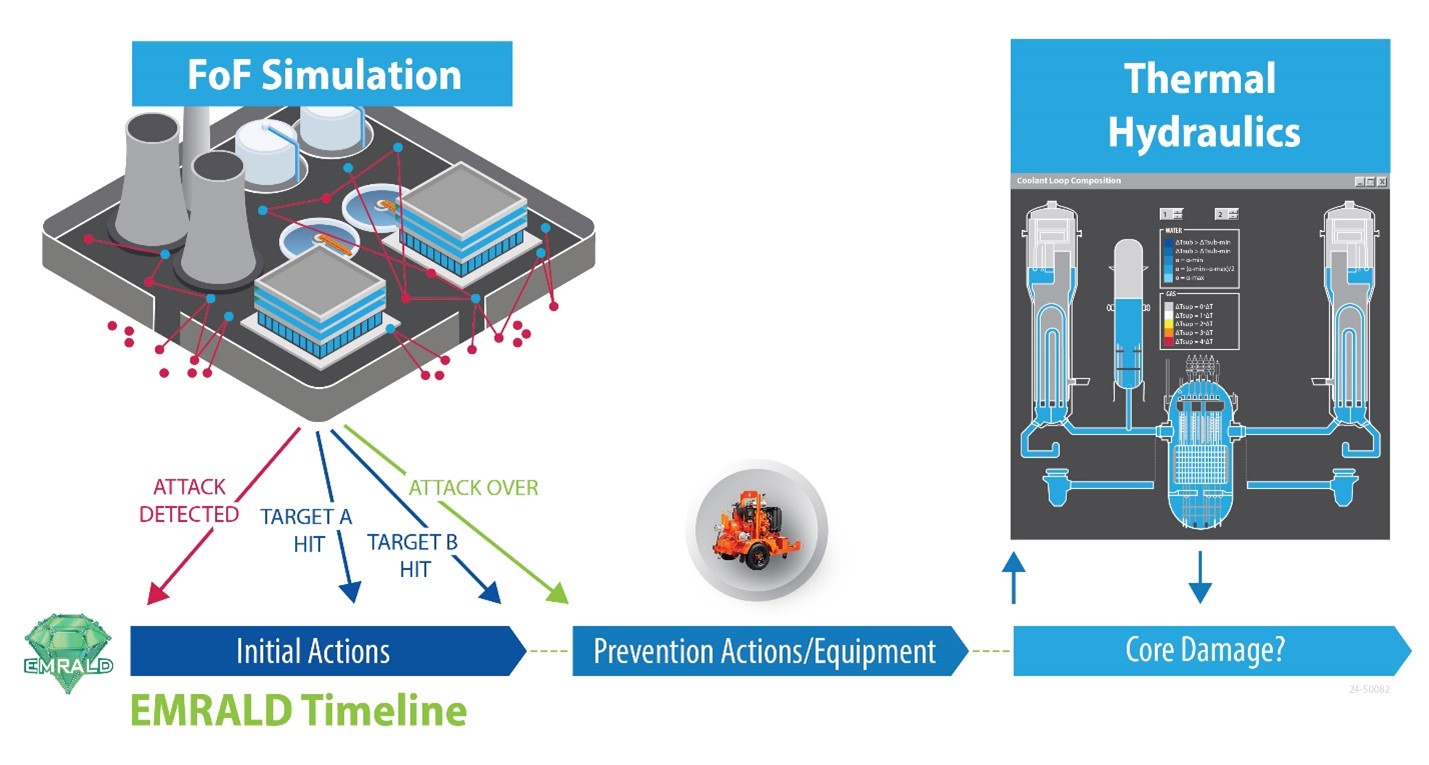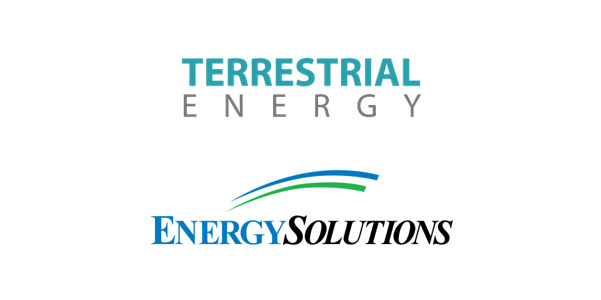Modeling physical security can help lower costs for nuclear power plants

Today’s nuclear power plants are the nation’s largest source of carbon-free energy, but they come with high operating and maintenance costs.
Competition from other sources, especially natural gas, coupled with low electricity prices, has resulted in the closure of some plants in the last decade due to economic reasons.
One way to alleviate these economic pressures is to reduce the cost of operating nuclear power plants, including the costs associated with physical security.
The Nuclear Regulatory Commission requires specific numbers of security personnel in addition to fences, monitoring devices, and other infrastructure to protect nuclear power plants from outside threats. Experts estimate that security personnel account for nearly 20 percent of the workforce at many power plants.
To enhance the cost effectiveness and performance of physical security efforts at nuclear power plants, researchers at Idaho National Laboratory and Sandia National Laboratories are developing tools for the safe, economical, long-term operation of the nation's fleet of nuclear power plants. This research is done under the auspices of the Department of Energy’s Light Water Reactor Sustainability (LWRS) program.
INL researchers have developed modeling and simulation capabilities that allow existing nuclear power plants and tomorrow’s advanced reactors to improve their security posture and lower costs through risk-informed approaches. These capabilities allow a plant operator to consider additional security features using advanced technologies or updating operator actions to make security operations more efficient.
Modeling and simulation help reduce the costs of physical security for existing infrastructure. Such tools also allow utilities to better plan for future investments while addressing the regulatory aspects of physical security. Further, the models allow power plants to integrate their safety and security, potentially creating more cost savings.
“This research is focused on modeling and simulation that helps the physical security experts conduct an assessment of their physical security posture to make it more efficient and effective,” said Vaibhav Yadav, an INL researcher who specializes in risk, reliability, safety, security, and regulations in nuclear power plants.
The EMRALD framework
Several software tools exist to simulate attack scenarios on a power plant’s facility layout; buildings; terrain features; and physical protection elements such as the intrusion detection system, adversary delay barriers, and armed response personnel. INL researchers have developed a software framework named the Event Modeling Risk Assessment using Linked Diagrams (EMRALD) to integrate these software tools and model preventative safety procedures to these scenarios.
EMRALD can also use a thermal hydraulics tool to evaluate whether any adverse consequences, such as core damage, could result from an attack. The tool also models the effect of preventative measures. The approach of combining EMRALD with the other software tools is called Modeling and Analysis for Safety and Security using Dynamic EMRALD Framework (MASS-DEF).
For example, during a postulated attack, plant operators could take actions that reduce the probability of core damage. MASS-DEF can perform the modeling and simulation necessary to evaluate the effects these actions may have on preventing core damage.
Modeling security at operating nuclear power plants
INL researchers have already used EMRALD to demonstrate potential improvements, such as optimizing the location of bullet-resistant enclosures or guard towers, that would enhance security efficiency for currently operating nuclear power plants.
In another example, Yadav and his colleagues—Shawn W. St. Germain, Steven R. Prescott, Robby Christian, and Christopher P. Chwasz—used the MASS-DEF methodology to leverage existing safety features to enhance physical security. These safety features, including the Diverse and Flexible Mitigation (FLEX) strategies implemented in the aftermath of the Fukushima Daiichi accident, can bolster a power plant’s security posture by keeping the plant safe after an attack.
FLEX equipment includes portable generators, pumps, and other equipment to supply reactor cooling in the event that installed plant equipment is damaged. While FLEX equipment was installed to support a plant’s response to natural hazards, such as flooding or earthquakes, operators could also use this equipment to provide reactor cooling in response to equipment damage caused by an attack.
Specifically, researchers showed that the existence of a secondary coolant pump, already required under FLEX, could be credited in assessing the effectiveness of the security posture of a nuclear power plant.
“A plant has already made significant financial investments for safety,” Yadav said. “If an adversary disables the primary pump, and a secondary pump can be activated when the first one fails, the safety and security is enhanced. The modeling, simulation, and analysis enables plant operators to credit existing nonsecurity systems and procedures toward security applications.”
Securing advanced reactors
Using physical security modeling and simulation for tomorrow’s smaller advanced reactors could enable their efficient deployment by reducing economic costs associated with prescriptive physical security requirements and improving the security posture. Since most advanced reactors are in the planning stage, tools like EMRALD can help developers design an optimal physical security system early in the process.
Further, advanced reactors will likely have different uses in different locations than today’s LWRs. Microreactors, for example, could find applications in remote industrial settings like mines or in remote communities. The physical security requirements in remote locations might look different than those at a power plant in a typical setting.
On the other hand, microreactors could someday be deployed in communities to support the electricity and heat needs of large industries. Security of those facilities may require different measures.
Modeling and simulation could help developers understand these different scenarios and provide tools to protect advanced reactors more effectively and economically.
In the end, modeling and simulation work shows that nuclear power plants are more robust against attacks than expected. “Even among experts, there is subjectivity about security posture,” Yadav said. “When you perform an objective assessment, you gain novel insights about the effectiveness of the existing security posture at nuclear power plants, as well as the potential for improvement in cost and performance when efficiency is enhanced.”
For more information, visit the Light Water Reactor Sustainability website.
Cory Hatch is a science writer for Idaho National Laboratory.
About Idaho National Laboratory
Battelle Energy Alliance manages INL for the U.S. Department of Energy’s Office of Nuclear Energy. INL is the nation’s center for nuclear energy research and development, and also performs research in each of the DOE’s strategic goal areas: energy, national security, science and the environment. For more information, visit www.inl.gov. Follow us on social media: Twitter, Facebook, Instagram and LinkedIn.






